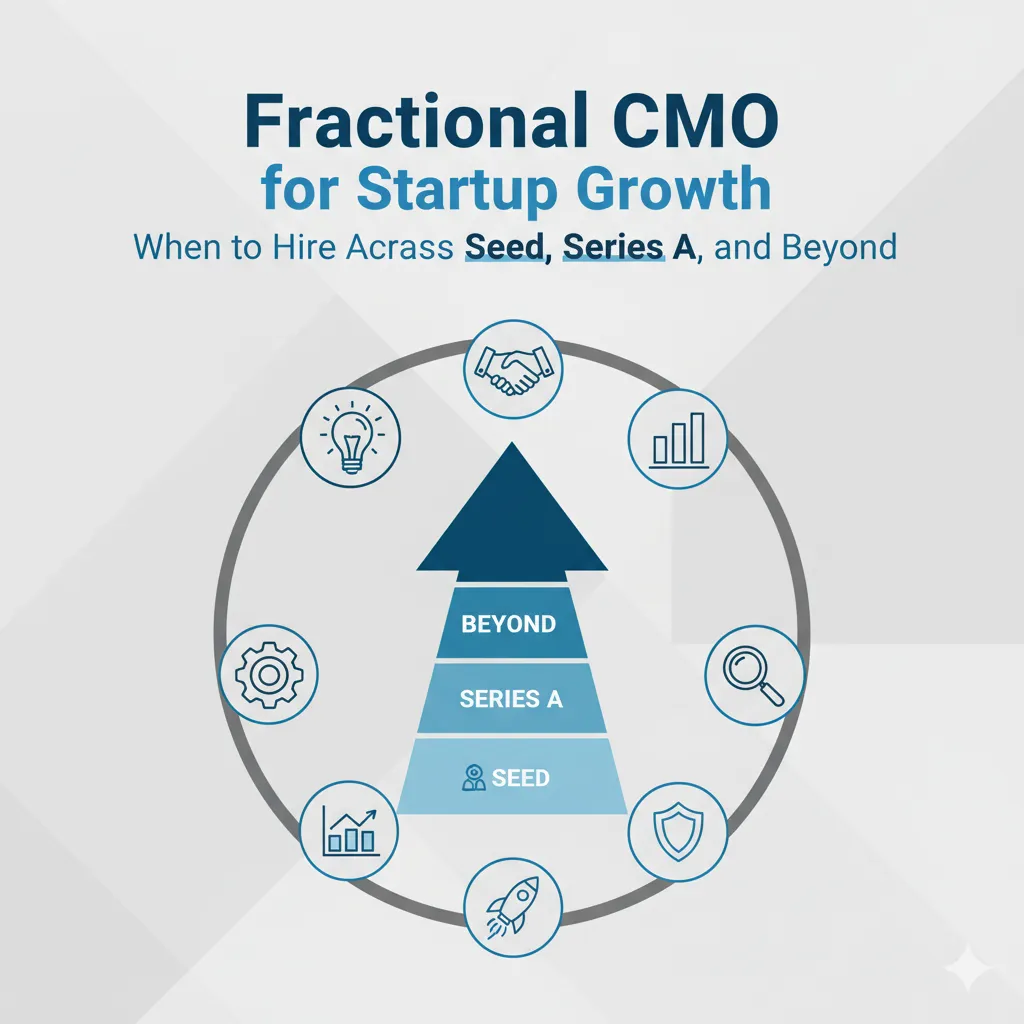A striking 9% of startup founders are currently working with or planning to engage fractional CMOs within the next 12 months, signaling a fundamental shift in how growth-stage companies approach marketing leadership. Companies leveraging fractional CMO expertise achieve 29% revenue growth rates compared to 19% for those without, while slashing executive costs by up to 75% versus traditional full-time hires. I’ll show you exactly when to hire a fractional CMO across each funding stage, backed by real performance data and specific engagement models that deliver measurable results without equity dilution or bloated overhead.
Contents
- 1 TL;DR
- 2 The Economics of Fractional Leadership: Why Smart Money Chooses Part-Time
- 3 Seed Stage: Building Marketing Foundations Without Breaking the Bank
- 4 Series A: Systematizing Growth for Predictable Scale
- 5 Series B and Beyond: Strategic Expansion Without Executive Bloat
- 6 Your 30-Day Fractional CMO Success Blueprint
- 7 Common Pitfalls and How to Avoid Them
- 8 Fractional CMO, Agency, or Full-Time? Making the Right Choice
- 9 FAQ
- 9.1 At what point should a seed-stage startup invest in a fractional CMO versus continuing with founder-led marketing?
- 9.2 How do fractional CMO costs compare to hiring a full-time marketing manager or director?
- 9.3 What’s the typical duration of a fractional CMO engagement across different funding stages?
- 9.4 How can startups measure the ROI of fractional CMO investments?
- 10 Sources
TL;DR
Fractional CMOs deliver strategic marketing leadership at 50-75% cost savings while driving 29% average revenue growth for startups. The optimal hiring timing varies by stage: seed companies need 5+ paying customers and validated product-market fit, Series A requires proven repeatable acquisition models supporting 2-3x growth, and Series B+ benefits during market expansion or strategic transitions.
- Seed stage: Engage for 3-6 months at $5,000-$10,000 monthly when you have 5+ paying customers
- Series A: Scale with 12+ month partnerships supporting 2-3x year-over-year revenue growth
- Cost efficiency: Save up to $268,000 annually versus full-time CMO while accessing 15-18 clients’ worth of insights
The Economics of Fractional Leadership: Why Smart Money Chooses Part-Time
Breaking Down the Financial Reality
The numbers make an undeniable case for the fractional model. While a full-time CMO commands an average $358,000 annually plus benefits and equity, fractional arrangements cost between $36,000 and $252,000 yearly. I’ve seen firsthand how this fractional CMO vs full time CMO comparison transforms startup economics—one tech company I worked with generated $5M in new revenue opportunities within nine months through fractional engagement, all without sacrificing precious equity or committing to permanent overhead.
The true advantage extends beyond raw salary savings. You’re eliminating recruiting fees that average $50,000+ for executive searches, avoiding bad hire costs that take 6-12 months to rectify, and sidestepping unused executive downtime during slower growth periods. Outsourced CMO services let you redirect that capital directly into customer acquisition or product development—investments that compound rather than depreciate.
ROI That Justifies the Investment
Companies working with fractional CMOs report marketing ROI improvements ranging from 30% to 60%, with B2B software and e-commerce businesses seeing the highest gains. The CMO as a service pricing model—typically $3,000 to $21,000 monthly—delivers strategic expertise from professionals managing 15-18 clients simultaneously. This cross-pollination of ideas and strategies creates what I call the “network effect advantage,” where your business benefits from solutions proven across multiple industries and growth stages.
Consider the opportunity cost equation: a part time CMO for startups working 7.5 hours weekly at $250/hour costs $90,000 annually, versus $265,000 for comparable full-time talent. That $175,000 difference funds significant marketing campaigns, sales enablement tools, or additional product developers—resources that directly accelerate growth rather than increasing fixed costs.
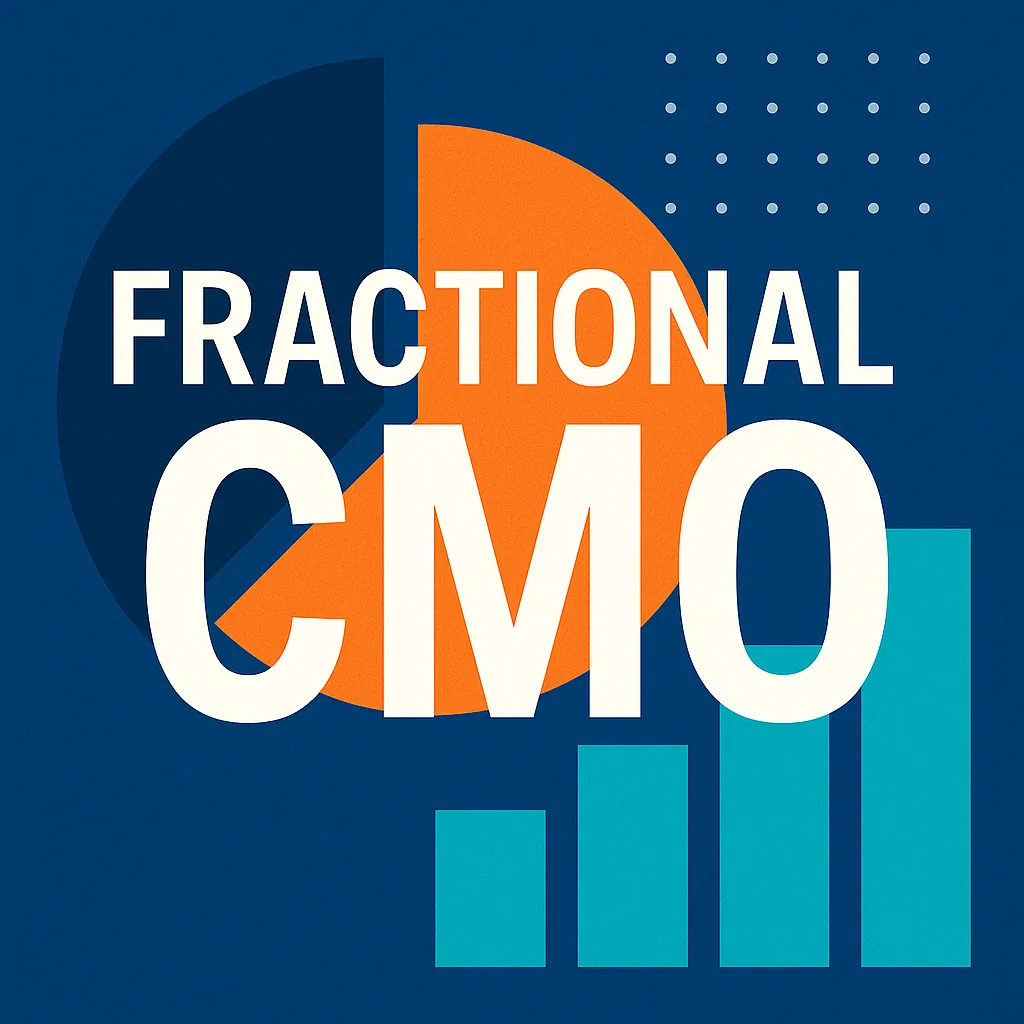
Seed Stage: Building Marketing Foundations Without Breaking the Bank
Fractional CMO Tasks: Building the Foundation for Systematic Marketing
During the seed phase, a Fractional CMO focuses on establishing a solid marketing foundation through intensive customer research and developing a clear messaging framework. The emphasis is on validating product-market fit and structured demand generation with a typical budget of $5,000-10,000 monthly. Essential CRM systems are implemented, basic marketing automation is set up, and performance tracking is established. This infrastructure forms the backbone for all subsequent growth phases and enables data-driven decisions from the very beginning.
The 5-Customer Rule for Timing Your Hire
I’ve observed a consistent pattern across successful seed-stage engagements: the optimal moment arrives when you have 5+ paying customers and can identify 2-3 similar customer profiles. This seed stage marketing strategy milestone indicates sufficient market validation to justify systematic marketing investment. Before this point, you’re still discovering product-market fit—after it, you risk losing momentum to competitors who move faster.
Early-stage startups typically allocate 10% of planned annual revenue to marketing, translating to $5,000-$10,000 monthly budgets. Within these constraints, a fractional CMO delivers maximum impact through focused 90-day roadmaps. The startup marketing budget by funding round at seed stage doesn’t support a full marketing department, but it perfectly fits a strategic advisor who establishes foundations for future scale.
What Success Looks Like at Seed
Seed-stage fractional engagements typically span 3-6 months with laser focus on four core deliverables: customer research documentation, messaging framework creation, initial channel selection, and basic funnel construction. I recently worked with a fintech startup that had just closed $3M in seed funding—we built their entire demand generation for B2B SMEs infrastructure in 90 days, including CRM setup, marketing automation basics, and their first repeatable lead generation campaign.
The key differentiator at this stage? You need someone who acts as a “growth quarterback” rather than a traditional marketing executive. Understanding what a fractional CMO truly does means recognizing they unify product, sales, and marketing functions without the overhead of managing large teams. This interim CMO for SMEs approach prevents common seed-stage pitfalls like premature channel diversification or building complex martech stacks before establishing basic conversion metrics.
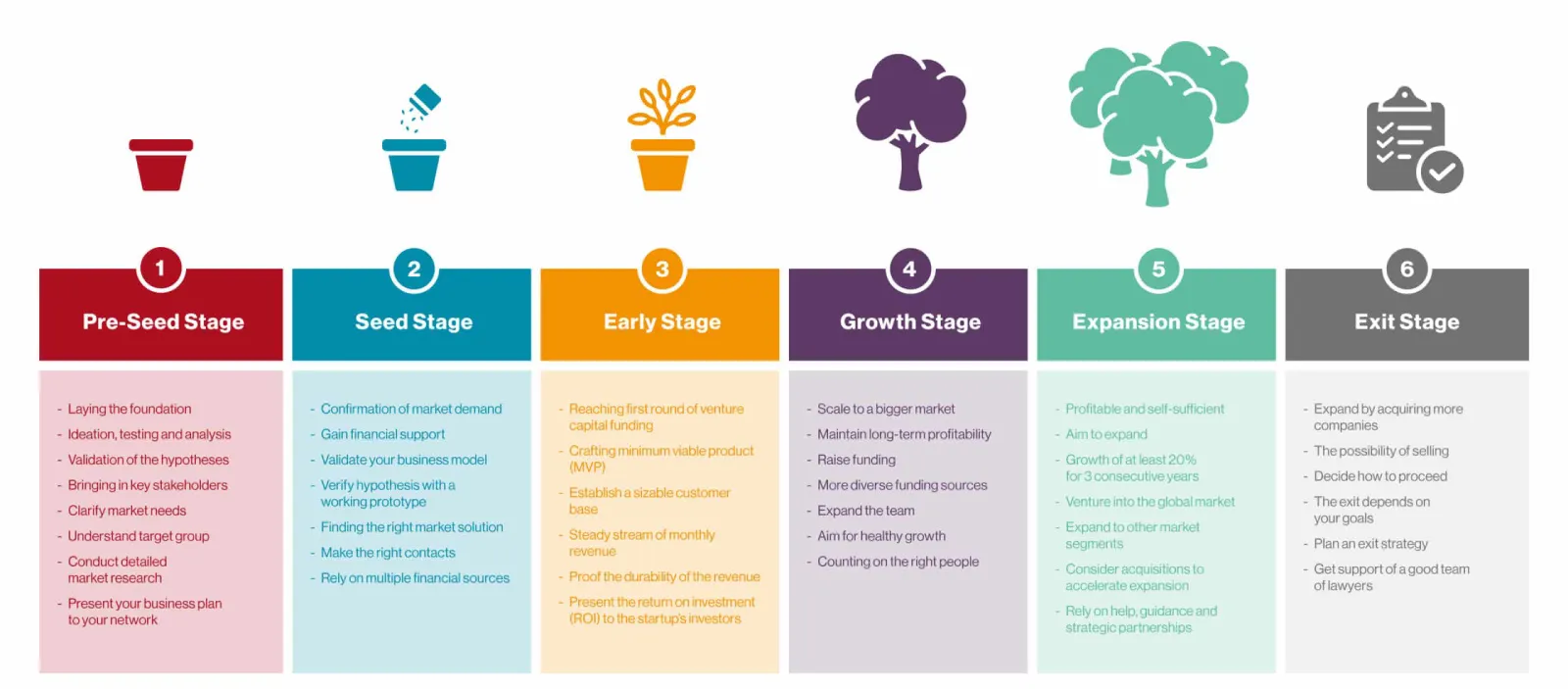
Series A: Systematizing Growth for Predictable Scale
Fractional CMO Tasks: From Ad-hoc to Scalable Systems
The Series A phase requires transforming chaotic marketing activities into scalable, repeatable systems. A Fractional CMO establishes structured processes, orchestrates multichannel campaigns, and builds specialized marketing teams that enable sustainable growth and measurable lead generation. Particular emphasis is placed on developing precise attribution models that make the ROI of each channel transparent. Seamless integration with sales processes ensures that marketing and sales work hand in hand to jointly optimize customer acquisition costs.
From Founder-Led to Process-Driven Marketing
Series A marks a critical transition where intuition gives way to systems. Companies at this stage demonstrate proven product-market fit through repeatable customer acquisition and clear unit economics. The go to market strategy for Series A requires building infrastructure that supports 2-3x year-over-year revenue growth while maintaining or improving customer acquisition costs.
Marketing teams expand to 3-7 specialized roles during Series A, with the fractional CMO orchestrating hiring decisions and role definitions. I’ve seen successful structures mirror Cast AI’s approach: VP-level leadership overseeing distinct functions for web marketing, outreach, growth, and content creation. The fractional executive guides these hires, ensuring each addition multiplies rather than merely adds to marketing capacity.
Optimizing for Sustainable Growth Velocity
Performance expectations crystallize around specific, measurable outcomes at Series A. Marketing qualified lead targets, pipeline contribution percentages, and CAC payback periods become the north stars guiding every decision. A 90-day transformation typically delivers 30% lead generation increases while establishing scalable processes for continued improvement.
The fractional CMO’s role evolves from foundation-building to sophisticated optimization. They implement attribution models, create repeatable playbooks for product launches, and establish cross-functional collaboration between marketing, sales, and customer success. When validating product-market fit, these executives bring frameworks tested across dozens of similar-stage companies, compressing learning curves that typically take years into months.
Series B and Beyond: Strategic Expansion Without Executive Bloat
Fractional CMO Tasks: International Expansion and Market Maturity
From Series B onwards, the focus shifts to strategic expansion into international markets and professional management of multiple product lines. The Fractional CMO develops internal marketing talent into independent leaders and optimizes complex customer journeys across various market segments. Coordinating sophisticated product launches requires refined strategies and precise timing. By reallocating capital away from expensive executive salaries toward direct customer acquisition and product development, growth velocity is often doubled.
Specialized Expertise for Complex Challenges
Mature startups with $10M+ annual recurring revenue face fundamentally different challenges requiring marketing leadership for Mittelstand companies experience. At Series B and beyond, fractional CMOs tackle strategic initiatives: international market entry, enterprise product launches, or M&A integration. The value proposition shifts from building capabilities to optimizing sophisticated multi-channel strategies across diverse customer segments.
I’ve watched Series B companies leverage fractional expertise during critical transitions with remarkable efficiency. A consumer startup expanding into B2B engaged a fractional CMO with specific vertical experience for eight months rather than making a permanent hire. This targeted approach delivered the specialized knowledge needed without long-term commitment to an executive who might not fit post-transition.
Building Institutional Knowledge That Lasts
Long-term planning becomes paramount at this stage, with fractional CMOs developing sustainable growth models that outlast their engagement. They establish centers of excellence, document best practices, and create institutional knowledge ensuring continuity. The focus shifts to market share metrics, brand value assessments, and customer lifetime value optimization—strategic indicators justifying premium fractional rates.
Integration complexity increases exponentially when managing multiple product lines and international operations. Successful fractional CMOs at this level balance strategic guidance with tactical support, often mentoring internal marketing leaders toward eventual CMO readiness. This succession planning approach ensures smooth transitions while maintaining momentum during leadership changes.
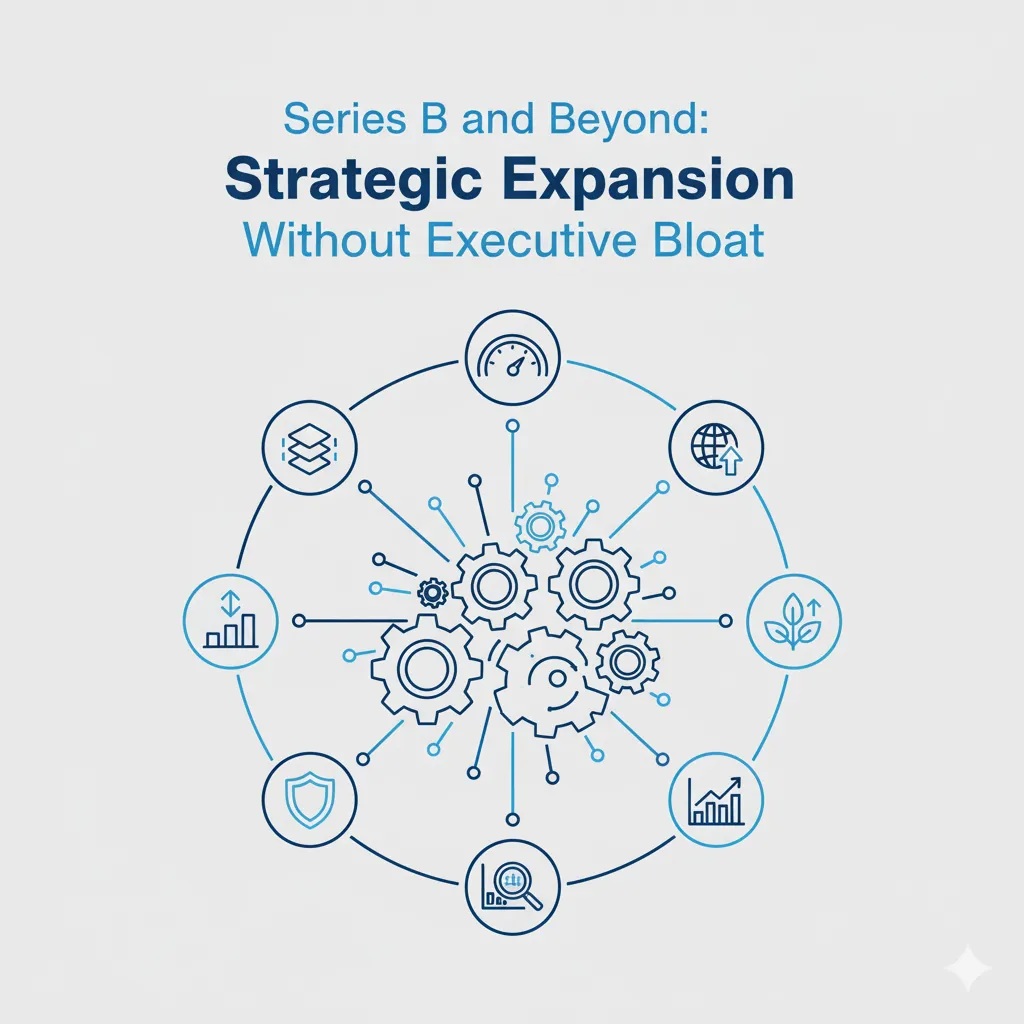
Your 30-Day Fractional CMO Success Blueprint
Week-by-Week Integration Roadmap
The first 30 days determine engagement success or failure. Week one focuses entirely on discovery—understanding current state, team capabilities, and immediate opportunities. I spend these initial days conducting stakeholder interviews, reviewing existing campaigns, and analyzing competitive positioning. Week two shifts to strategic planning, developing initial hypotheses and testing frameworks based on discovered insights.
Week three aligns goals across all stakeholders, ensuring executive buy-in and team commitment to proposed strategies. This alignment phase proves critical; I’ve seen promising engagements fail when sales, product, and marketing operate from different playbooks. Week four prepares for implementation by establishing communication protocols, defining reporting relationships, and setting measurable success metrics. The fractional CMO onboarding process must balance speed with thoroughness—moving too fast risks missing crucial context, while excessive analysis delays value delivery.
Red Flags and Green Lights in Selection
Essential qualifications extend far beyond impressive resumes. Evaluate candidates’ portfolios for relevant industry experience and similar-stage company success. Red flags include purely tactical focus, poor communication skills, or inability to work within existing team structures. The most effective fractional CMOs demonstrate both strategic vision and tactical flexibility—equally comfortable reviewing campaign performance data and presenting to board members.
Green lights signal exceptional candidates: they ask probing questions about your business model, demonstrate clear frameworks for common challenges, and provide specific examples of similar transformations. Reference checks should probe for measurable results, team development success, and adaptation to resource constraints. The best fractional CMOs maintain long-term client relationships—that average 19-month retention speaks volumes about value delivery.
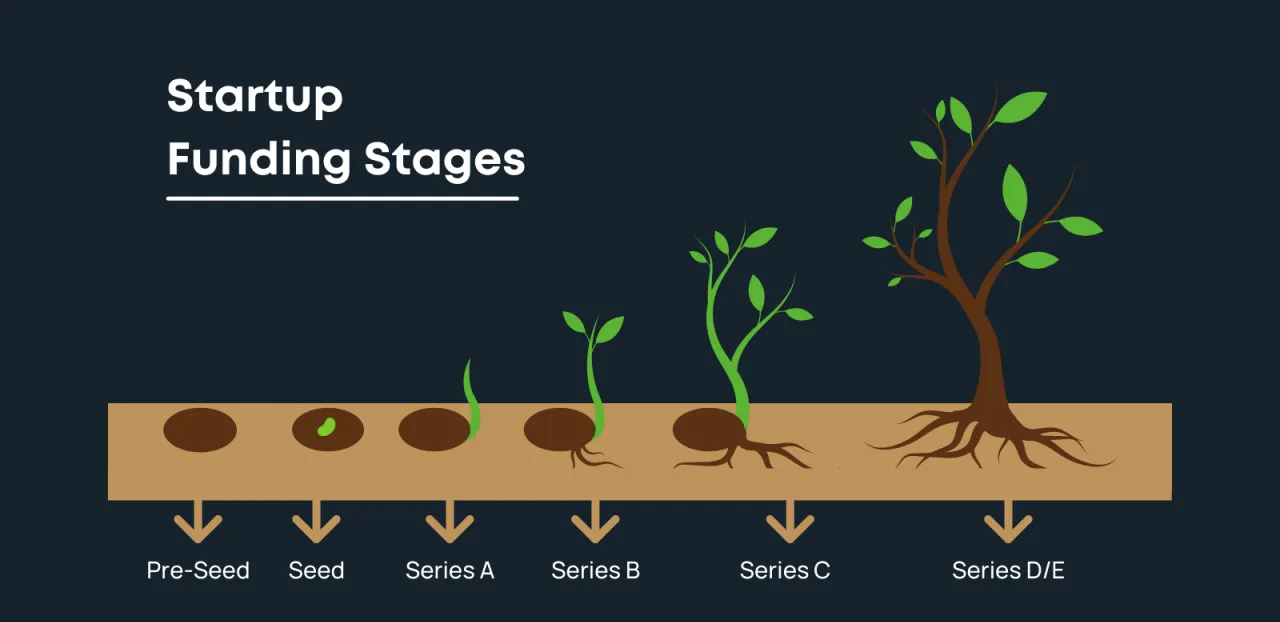
Common Pitfalls and How to Avoid Them
Integration Challenges That Kill Momentum
Limited time availability creates the most frequent friction point in fractional engagements. Companies expecting full-time responsiveness from part-time executives set themselves up for disappointment. I establish structured communication protocols upfront: defined office hours, response time expectations, and escalation procedures for urgent issues. This clarity prevents the frustration that arises when urgent needs conflict with fractional availability.
Cultural assimilation presents another significant challenge. Fractional CMOs must quickly understand and adapt to company values, communication styles, and decision-making processes. Successful integration requires intentional relationship building with key stakeholders—I schedule regular one-on-ones with sales, product, and customer success leaders during my first month to establish trust and collaboration patterns.
Avoiding Over-Dependence While Ensuring Knowledge Transfer
The most successful fractional engagements build internal capabilities rather than creating dependency. I structure every engagement with explicit knowledge transfer goals: documented processes, trained team members, and clear succession plans. This approach ensures marketing momentum continues after the fractional relationship ends.
Performance measurement requires careful balance between accountability and flexibility. Establish clear KPIs from day one, but build in adjustment mechanisms as strategies evolve. Regular review cycles—weekly tactical, monthly strategic, quarterly comprehensive—maintain alignment while allowing course corrections based on market feedback.
Fractional CMO, Agency, or Full-Time? Making the Right Choice
The decision between different marketing solutions is challenging for many founders. Last week, I sat down with a CEO who was facing exactly this question. His situation is typical: limited budget, significant growth pressure, uncertainty about the right path.
Marketing agencies excel at clearly defined projects – think of a brand relaunch or a performance campaign. They bring specialized skills for limited timeframes. But strategic leadership? That’s not their terrain. GTM consultants deliver brilliant strategies on paper, but disappear after the presentation. The implementation remains your burden.
A full-time CMO makes sense from around $15 million ARR onwards, when you need constant, comprehensive leadership and manage complex teams. Below that? A Fractional CMO combines strategic depth with operational flexibility – without burdening you with fixed costs. The rule of thumb: if you need strategy plus implementation support, there’s no way around the fractional model.
FAQ
At what point should a seed-stage startup invest in a fractional CMO versus continuing with founder-led marketing?
The transition point arrives when you have 5+ paying customers and can identify clear patterns in your ideal customer profile. If you’re spending more than 15 hours weekly on marketing activities or missing growth opportunities due to marketing bandwidth, it’s time to bring in fractional expertise. Most successful seed-stage engagements begin when companies have $30K+ monthly recurring revenue and need systematic lead generation processes rather than sporadic marketing efforts.
How do fractional CMO costs compare to hiring a full-time marketing manager or director?
Fractional CMOs cost $3,000-$21,000 monthly compared to $120,000-$180,000 annually for marketing managers or $180,000-$250,000 for directors. The key difference lies in strategic capability—fractional CMOs bring 15+ years of experience and insights from managing multiple clients simultaneously. You’re essentially accessing C-level strategy at manager-level costs, with the added benefit of no equity dilution, benefits, or long-term commitments.
What’s the typical duration of a fractional CMO engagement across different funding stages?
Seed-stage companies typically engage for 3-6 months focusing on foundation building. Series A engagements extend 12+ months as companies build scalable systems, with 33% maintaining longer relationships. Series B+ companies often use fractional CMOs for specific 6-12 month initiatives like market expansion or product launches. The average retention across all stages spans 19 months, though many companies maintain advisory relationships after primary engagements conclude.
How can startups measure the ROI of fractional CMO investments?
Track both immediate metrics (lead generation increases, conversion rate improvements, CAC reduction) and strategic indicators (team capability development, process documentation, market positioning strength). Successful engagements typically deliver 29% revenue growth rates and 30-60% marketing ROI improvements. Measure value through cost avoidance too—eliminating bad hires, reducing agency dependencies, and preventing costly marketing mistakes that fractional experience helps avoid.

